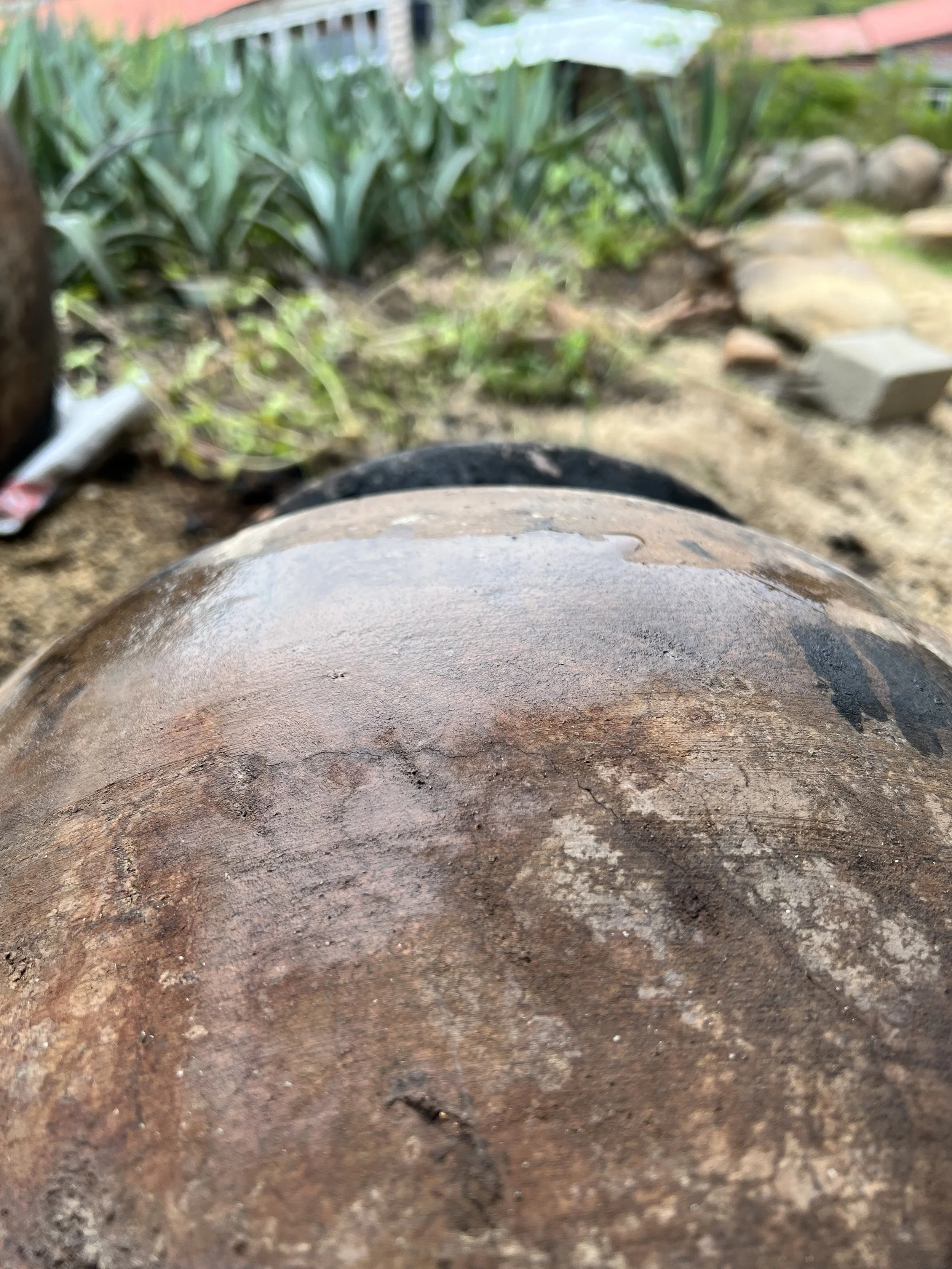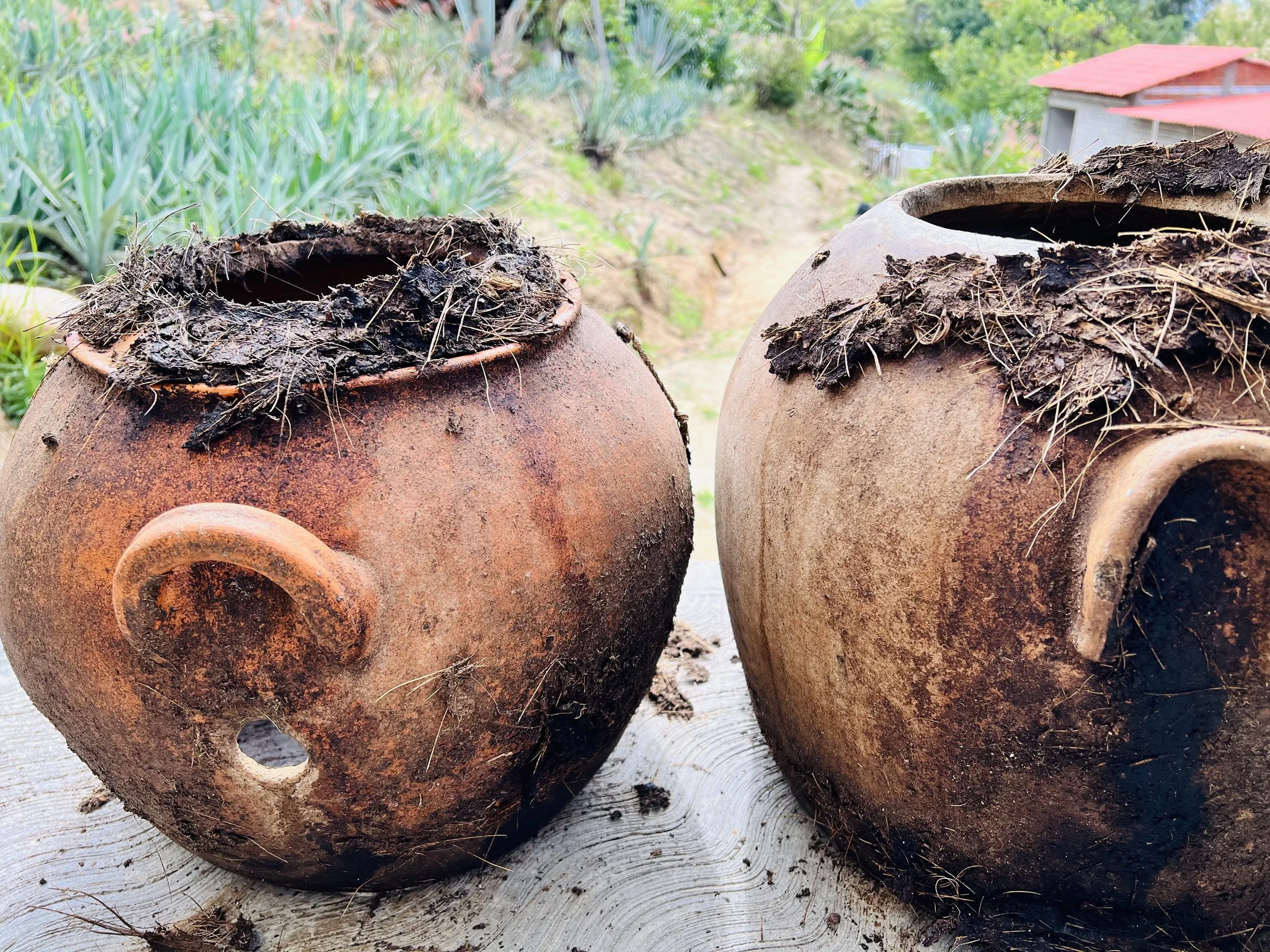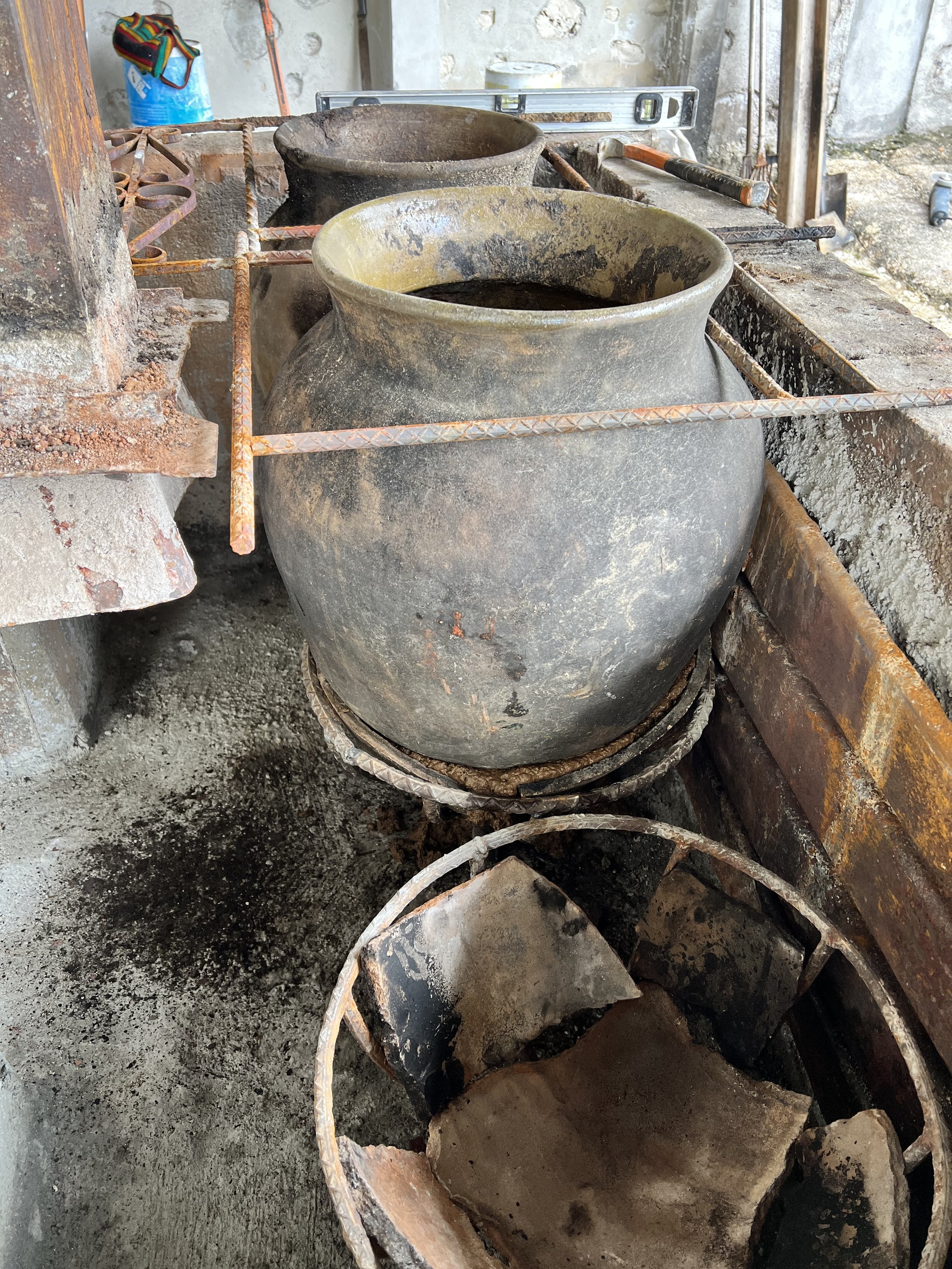Rainy Season - Clay Pot Still Restoration & Repair
The rainy season in Oaxaca, which typically runs from May to September, brings challenging and hazardous conditions for working in the fields and harvesting agave due to slippery mud and the constant presence of mosquitoes. Mezcal production slows down during this time, allowing maestro palenquero José Alberto Pablo and his father Don Mario to focus on restoring and repairing their clay stills—an essential element in achieving the unique and special characteristics of their mezcales.
The reason for the repairs is that the clay cooking pots eventually crack or break due to the high temperatures they endure during distillation—you can see hairline cracks in the cooking pot above. If a pot were to break open during distillation, there could potentially be an explosion as the high-proof alcohol meets the open flame. Fortunately, this has never happened at José Alberto's palenque. He carefully inspects and maintains his still before each distillation, and once a year, during the rainy season, the still is disassembled for repairs. Whenever possible, the clay pots that can be salvaged are repaired by hand for reuse as they are expensive - about $200US per pot.
The brick still at the palenque of maestro José Alberto Pablo is disassembled and then reassembled for repairs in rainy season. The trio of clay pots are held in place by the iron rebar baskets seen below.
The repair of the 60-liter clay pots begins when Don Mario carefully marks hash-shaped lines over the cracked area, allowing the cement mixture (visible in the background) to adhere to the smooth surface.
The hash marks wind a path along where the cracks are, and the pot is ready for the cement and clay patchwork repair.
Next, Don Mario applies the cement mixture to the hash marks and then fills the cracks with pieces of old clay pots, creating a patchwork that will shield the existing cracks from the heat of the still. The repaired pots will typically last another season or two before having to be replaced by new pots.
When the clay pots are beyond repair they are used for fermentation. Here, the pots are lined up outside of the fermentation room, awaiting installation and use.
Pictured below are two monteras, the smaller 40-liter pots that sit atop the larger 60-liter cooking pots that contain the agave tepache and, during the second distillation, the distillate. The montera is topped with a stainless steel condenser—or sometimes, around these parts, a rusty enamel condenser, which produces a “yellow” destilado. A mixture of clay and agave fiber, visible along the top rim, is used to seal the connection between the pot and the condenser.
Once repairs to the cooking pots are completed, José Alberto and his father Don Mario begin to reassemble the still. The iron rebar baskets are lined with broken pieces of clay which will help protect the cooking pots from the direct heat of the fire. A clay-based cement mixture is added to help hold the pot in place.
A little more of the clay-based cement mixture is added by Don Mario, and José Alberto gently but firmly puts the pot in place.
The three clay pots of the still are put into place and then framed with rebar which will be the basis for rebuilding the top of the still.
The last clay pot in place Don Mario and José Alberto ensure that the pots are level and the rest of the still assembly can continue.
To start assembling the still, José Alberto places pieces of clay on the rebar, which will serve as the foundation for the top of the clay pot still.
The final step in rebuilding the still involves José Alberto applying a clay and cement mixture to seal the top.
Assembly completed, the fresh claypot still is left to dry, and will be ready for the next distillation.
Questions about this process, or anything else related to José Alberto Pablo and Creador? Send an email.








